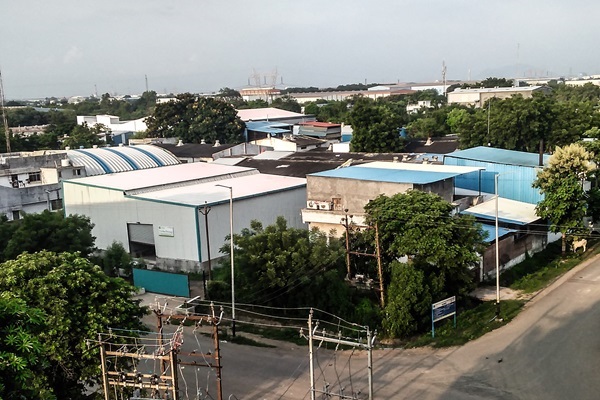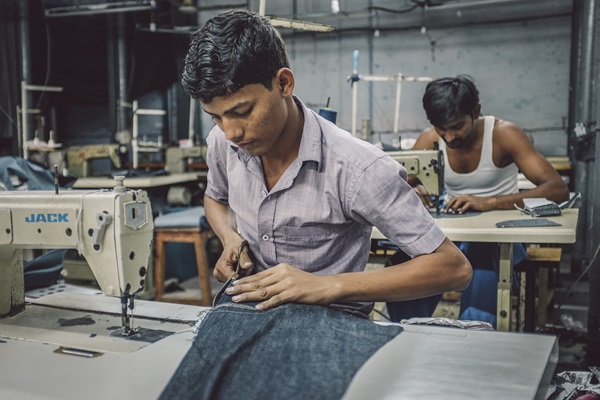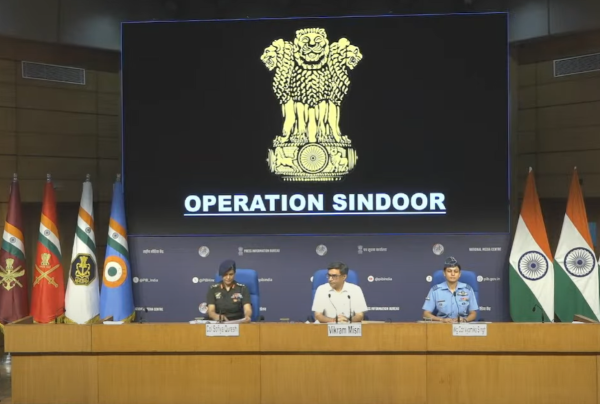.png)
Private Capex Is Faltering, And Global Fragmentation May Be To Blame
India’s first forward-looking capex survey shows a sharp fall in 2025-26 plans, exposing demand worries and rising global trade uncertainty.


By Dhananjay Sinha
Dhananjay Sinha, Co-Head of Equities and Head of Research at Systematix Group, has over 25 years of experience in macroeconomics, strategy, and equity research. A prolific writer, Dhananjay is known for his data-driven views on markets, sectors, and cycles.
April 30, 2025 at 5:26 AM IST
The Statistics Ministry has released a landmark forward-looking survey that tries to gauge capex intent among large private enterprises. The headline result is stark: investment intentions for 2025-26 are down 25% from the previous year to just ₹4.88 trillion.
Fewer firms responded to the survey, and of those that did, even fewer reported plans to invest. In nominal terms, this implies a modest compound annual growth rate of 5.5% since 2021-22. Adjusted for inflation, the real growth in capital formation is close to 1.5%.
For a country banking on private sector investment to take over from the government’s infrastructure push, the data reads like a warning. While official commentaries attribute the fall to conservatism and pending clearances, the macroeconomic context hints at something deeper: waning demand, receding fiscal elbow room, and a world increasingly turning inward.
The forward-looking survey is complemented by backward-looking datasets from CMIE and the Annual Survey of Industries, which further reinforce the sobering trend. According to CMIE, the average net fixed capital for domestic private companies grew by just 1.2% in real terms over the past five years.
The ASI data, which covers a broader set of over 250,000 industrial firms, shows real fixed capital per factory actually declined by 1.1% annually during the same period. Compared with the pre-2014 phase of capex vibrancy, where real growth rates exceeded 7% for companies and 10% for factories, the fall is severe.
The reasons are not hard to decipher. Before the pandemic, capital formation was already impaired by weak consumption, regulatory bottlenecks, and uneven policy incentives. The post-pandemic recovery, such as it is, has been led by the public sector, with private players preferring to optimise operations and preserve margins. What has changed recently is the resurgence of global trade tensions.
With the United States now embracing broad-based tariffs under President Donald Trump’s reciprocal trade regime, the external climate for investment has turned riskier.
India’s policymakers have long taken comfort in the idea that the country is insulated from these geopolitical shifts. But the MoSPI capex survey provides the first systematic evidence that global fragmentation is exerting a drag on private investment intent. It appears that the protectionist wave, coupled with lukewarm domestic demand, is pushing Indian firms to delay or defer new capital commitments.
This is not just a statistical blip. MoSPI’s survey covered over 16,000 large enterprises, stratified using sales thresholds. Yet only 3,064 responded for the 2025-26 reference year, and just 71% of them expressed any capex intent.
That is barely 2,172 firms. The implied average investment per enterprise is ₹1.6 billion — an underwhelming figure given India’s GDP size and investment needs. Moreover, over half the investment is concentrated in machinery and equipment, suggesting a bias towards maintenance or marginal upgrades rather than expansionary greenfield projects.
Worryingly, the capex slump comes even as corporate sales growth for non-finance companies is weakening, with many firms cutting discretionary spending and leaning on automation to defend profitability. This implies that not only are companies investing less, but they are also adopting strategies that reduce future labour absorption.
Meanwhile, the government’s ability to drive growth through capital spending is constrained. Fiscal space is narrowing, and the focus has shifted to regulatory tweaks and monetary easing. The Reserve Bank of India has frontloaded liquidity injections and paused on further rate hikes. But these measures may do little to spur private investment if demand remains tepid and external risks remain elevated.
The cumulative effect is that private capex remains a missing piece in India’s macroeconomic puzzle. And the missing piece is growing larger. If capital formation in the private sector had continued at its pre-2014 trajectory, CMIE data suggests the current stock of net fixed assets would have been 36% higher. That is a substantial shortfall.
What is emerging is a structural story. The optimism about India’s domestic market is being offset by persistent global volatility and a cautious corporate mindset. MoSPI’s initiative to conduct a forward-looking capex survey is commendable. It brings transparency and timeliness to a space that has long relied on anecdotal evidence. But the picture it paints is sobering.
For now, the promise of a private investment-led recovery looks distant.
If anything, the data suggests the narrative of India’s insulation from global risks needs urgent re-examination. Tariff wars, fiscal fatigue, and risk aversion have formed a triad that India’s policymakers must now confront. Capital formation will not revive through liquidity alone. It requires demand, clarity, and above all, confidence. The new capex survey shows just how little of that is currently on offer.






